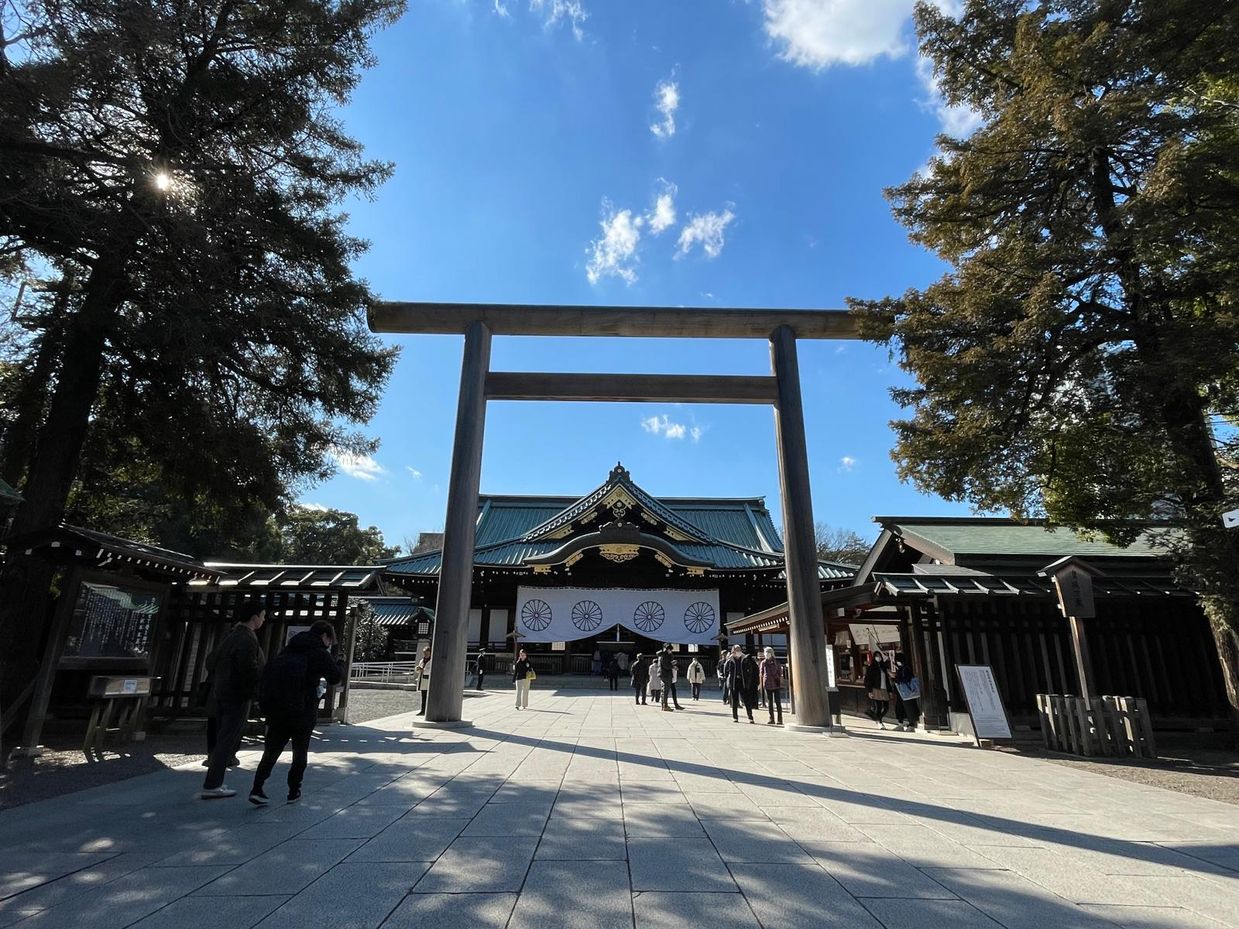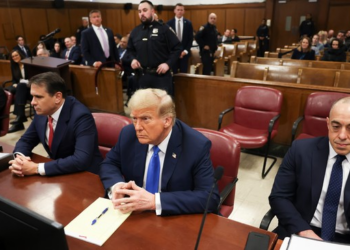
TOKYO, Japan — Almost eight decades after Japan surrendered and the Allies took Berlin, world leaders are still reminded that some wounds remain stubbornly unhealed.
Just ask U.S. Defense Secretary Pete Hegseth. The Trump administration’s Pentagon boss, on his first official visit to meet with allies in the Pacific, took some flak recently from China after wading into Asia’s history wars.
“The bravery of those who fought … American and Japanese alike, endures in history,” Mr. Hegseth told his Japanese hosts at a ceremony honoring soldiers killed on Iwo Jima during World War II. Mr. Hegseth said the United States and Japan share a “warrior ethos.”
The praise of Japan, a nation that many across the Indo-Pacific region feel has failed to acknowledge its responsibility for the horrors of WWII, raised some hackles, especially in Beijing.
“This year marks the 80th anniversary of the victory in the Chinese People’s War of Resistance Against Japanese Aggression and the World Anti-fascist War,” Beijing’s Foreign Ministry Spokesman Guo Jiankun said, referencing World War II. “Japan, in particular, needs to learn from history.
“Washington is eager to portray Tokyo as a ‘frontline fortress’ against China,” added state media Global Times. “Yet Japan has yet to fully confront or atone for its wartime crimes.”
But even though history is not a priority in ultra-modern Tokyo, there are quiet, carefully maintained monuments and shrines in the city that pay tribute to Japan’s war dead — and add nuance to dominant U.S. war narratives.
Japan’s Unknown Warrior
Perched beside the Imperial Palace moat, in a tiny, wooded park, sits Chidorigafuchi National Cemetery. Defying Tokyo’s bustle, it is quiet and scenic. A stone map records the locations where Japanese soldiers fell in WWII: India’s borderland, Mongolian steppes, Pacific islands.
A tablet memorializes 55,000 Japanese who died in Siberian POW camps, post-surrender. Images depict recoveries of war remains and DNA from cliff-side fortifications and collapsed bunkers.
A modest museum contains artefacts — rusted bayonets, bullet-holed helmets. “Our son did not get to be buried in his hometown,” reads a plaque. “He is buried here.”
Established in 1958, Chidorigafuchi centers around the Tomb of the Unknown Warrior, representing all of Japan’s war dead. This is the location visited by Japan’s emperors when commemorating the war.
Chidorigafuchi’s lack of controversial historical statements enabled visits by one-time enemies, including a then-U.S. Secretary of State John Kerry, former U.S. Indo-Pacific Commander Adm. John Aquilino and Australian Defense Minister Richard Marles.
Still, the cemetery is little known, and on a weekday, virtually empty. One visitor stumbled across it on Google maps.
“I did not know of it, then I realized it was for all the unknown dead,” said Kimiko Masao, a visitor from Aichi Prefecture. “I feel incredibly moved, I was tearing up at photos of people recovering remains.”
Ms. Masao had dropped by en route to a far better-known shrine just a 15-minute walk away.
Shrine of glory and infamy
Behind imposing gates, amid cherry trees and traditional architecture, stands the Yasukuni Shrine, dating to 1869.
No bodies lie here. Per Shinto beliefs, it enshrines the souls of some 2.46 million killed fighting for Japan.
A large museum puts forth Imperial Japan’s war narrative.
The attack on Pearl Harbor did not happen in a vacuum. Text tells how a fast-modernizing Japan followed the colonial trend of seizing overseas territories, but was infuriated by second-class treatment in global treaties and racist, anti-Asian U.S. laws.
From 1937, Japan’s creeping invasion of China incurred U.S. hostility. In July 1941, after Japan advanced into Indochina, Washington embargoed oil exports, backing Tokyo into a corner.
Japan responded with history’s most widespread offensive, striking targets across a vast geographic breadth — including Pearl Harbor.
In what reads like millennial messaging, Yasukuni states that one war aim was to eject White colonialists from Southeast Asia.
Military enthusiasts will be awed by exhibits ranging from samurai arms to suicide rocket planes. Emotion intermingles with hardware.
Ten thousand portraits of largely youthful war dead are accompanied by language of “war gods” and “divine thunderbolts.” The last recorded words of troops are heartbreaking.
A kamikaze pilot signs off with, “Everyone, this is the end. Goodbye! Goodbye!” “I hope you will be mindful of the children’s education,” an admiral writes repeatedly, in his last letter to his wife.
However, security guards patrol inside and police are stationed outside, for Yasukuni has been vandalized — even bombed — by Chinese and Korean activists angered by its selective presentation.
Coerced military prostitutes and Unit 731, which conducted biological war experiments on live subjects, get no mention. The infamous Nanjing Massacre, dubbed an “incident,” merits a paragraph.
Descriptors of a locomotive from the Thai-Burma “Death Railway” ignore the 90,000 forced laborers and 12,000 Allied POWs killed during construction.
“It’s very loaded language,” said Shoko Plambeck, a Japanese documentary producer. “They use words like expansion, unification and peace to describe Japanese actions, but descriptions of other countries’ actions use words like aggression.”
Moreover, 14 persons accused of Class-A war crimes — 11 were convicted — were controversially enshrined in Yasukuni in 1978.
No emperor has visited since 1975, but conservative politicians frequently visit and make offerings.
The Pacific War’s history war
With the Pacific War a red-button issue 80 years after it ended, many walk a middle line.
“I don’t know how controversial it is: They fought for us,” said Ms. Masao. “Every country has its own values, I don’t see it as good or evil.”
“We are honoring people who died in war, to make sure it does not happen again,” said Nakamura Tsutomu, Chidorigafuchi’s director.
Japan’s school textbooks, which neighbors accuse of being whitewashes, are another minefield.
“At school, we are taught that we were both aggressors and victims,” said one visitor at Chidorigafuchi. “There is no distinction.”
Akira Yasui, a conservative salesman, is angrier.
“We learn a masochistic view of history at school,” he said. “Many teachers refuse to stand for the Japanese flag or sing the national anthem at graduation — they are pro-China, pro-Korea.”
Even so, Japanese researchers have published widely on issues including ‘comfort women’ and Unit 731. Popular culture — anime, film, manga and TV — reflects diverse opinions of wartime actions.
“Japan has had a vocal and electorally viable far left with their own views of the war, which complicates narratives about a dominant right-wing war narrative in Japan,” said Shaun O’Dwyer, editor of 2024’s “Confucianism at War,” about the Pacific War.
“Even less-recognized is that Japanese conservatives have also been at loggerheads over the same war experience,” said the New Zealand-born, Japan-based academic.
In an era of statue toppling, disputatious historical interpretations are not unique to Japan.
Confederates who fought for slavery lie in Washington’s Arlington National Cemetery, critics say; London’s Imperial War Museum skates over British colonial brutality.
“I know of many soldiers who committed war crimes that no one will ever know, and the same applies to any national cemetery,” said David Park, a U.S. Afghanistan-Iraq veteran who is married to a Japanese. “Japan houses all their war dead. Leave their cemetery alone.”
Neither shrine has major plans for August 2025 — the 80th anniversary of war’s end. Yasukuni will hold a photo exhibition, Chidorigafuchi and an essay competition, officials said.
Westerners, assured of their righteousness in World War II, may be sideswiped by the nuances.
Nang Kham Wah, a Burmese visiting Yasukuni with her Japanese husband, was asked who behaved worse: Myanmar’s British colonialists or its Japanese invaders.
“Both!” she replied.












